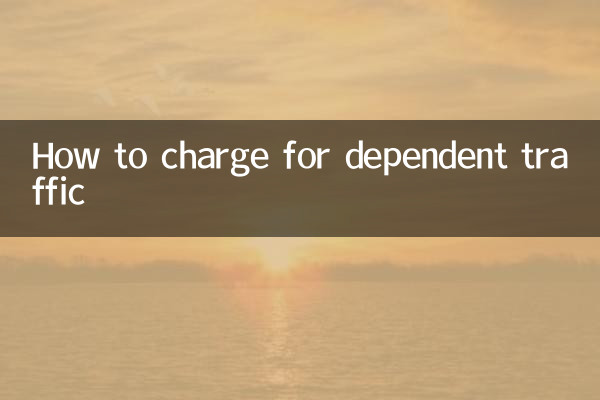How to charge for dependent traffic
In recent years, with the popularity of mobile Internet, data consumption has become one of the focuses of users' attention. As a flexible traffic billing method, backed-up traffic is favored by more and more users. This article will combine the hot topics and hot content on the entire network in the past 10 days, analyze the charging model of premium traffic in detail, and help users better understand it through structured data.
1. What is dependent traffic?

The system automatically matches the closest traffic tier for billing based on the actual usage when the user uses traffic. For example, if a user uses 1.2GB of traffic, the system will automatically match the 1.5GB traffic range for charging. This method avoids the problem of traditional traffic packages of "waste if not used up, and price increases if not used enough", and is more flexible and economical.
2. Charging model for dependent traffic
The following is a comparison of the charging tiers and prices of mainstream operators' traffic-based traffic (data comes from recent public reports):
| Operator | Traffic level (GB) | Price (yuan) | Remark |
|---|---|---|---|
| China Mobile | 1.5 | 15 | Applicable to 4G/5G users |
| China Unicom | 2 | 20 | Some provinces can be used in combination |
| China Telecom | 3 | 25 | Limited time offer |
3. Advantages of relying on stall traffic
1.Flexible billing: Users don’t need to worry about running out of data or not having enough data, as the system automatically matches the most appropriate level.
2.High cost performance: Compared with traditional traffic packages, the unit price of standalone traffic is lower, which is suitable for users with medium and low traffic needs.
3.Transparent consumption: The charging rules are clear, and users can check traffic usage and fees at any time.
4. Applicable scenarios for stalled traffic
1.short term use: Suitable for users who need traffic temporarily, such as traveling, business trips, etc.
2.Large traffic fluctuations: For users whose monthly traffic needs are not fixed, relying on the traffic can avoid waste.
3.Limited budget: Users who want to meet their traffic needs at a lower cost.
5. How to activate the traffic flow?
Currently, the three major operators all support guaranteed traffic services, and users can activate them through the following methods:
1.Mobile APP: Log in to the operator's official APP and select "Dependent Traffic" in "Traffic Service" to activate it.
2.SMS activation: Send the specified command (such as "KTLL" to 10086) to activate.
3.Offline business hall: Bring your ID card to the operator's business hall to apply.
6. User FAQs
1.Can the flow rates be stacked?
Answer: Some operators support overlay, and the details are subject to local policies.
2.How long is the validity period of the backed-up traffic?
Answer: It is generally valid for the current month, and unused traffic will not be carried forward.
3.Are there any conflicts between premium data and international roaming?
Answer: The backed-up traffic is only for domestic use, and international roaming requires a separate traffic package.
7. Summary
As an innovative traffic billing method, backed-up traffic is gradually becoming a new choice for users due to its flexibility and high cost performance. Through the detailed analysis of this article, I believe that everyone will have a clearer understanding of the charging model and usage method of relying on traffic. It is recommended that users choose appropriate traffic services based on their own needs to avoid unnecessary expenses.

check the details

check the details